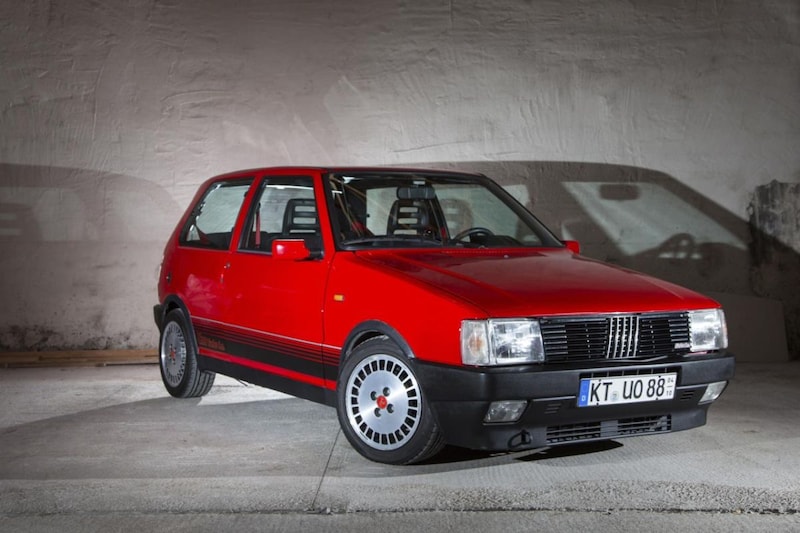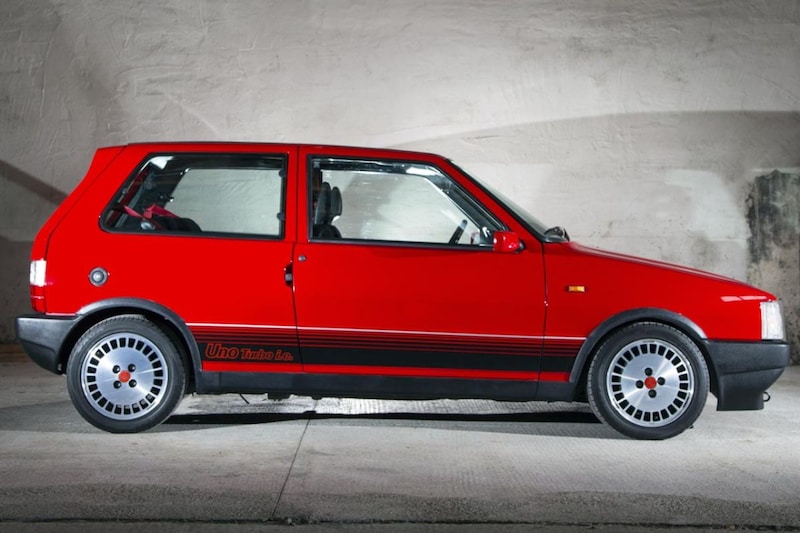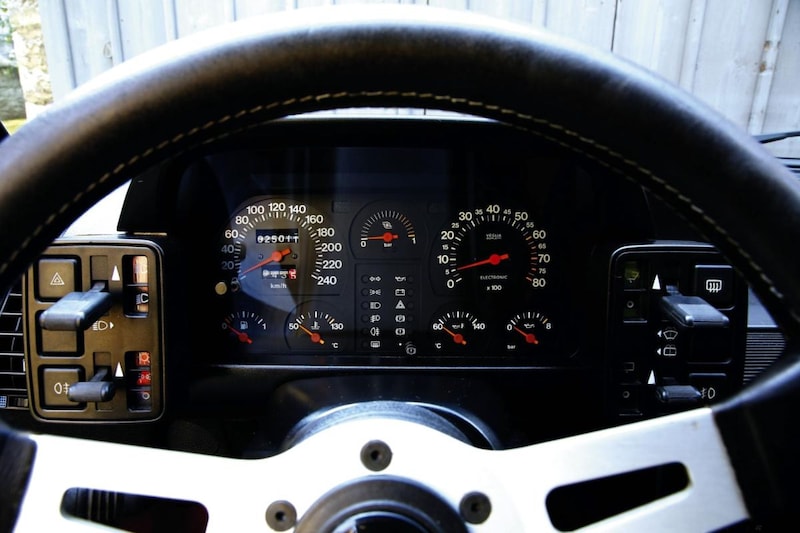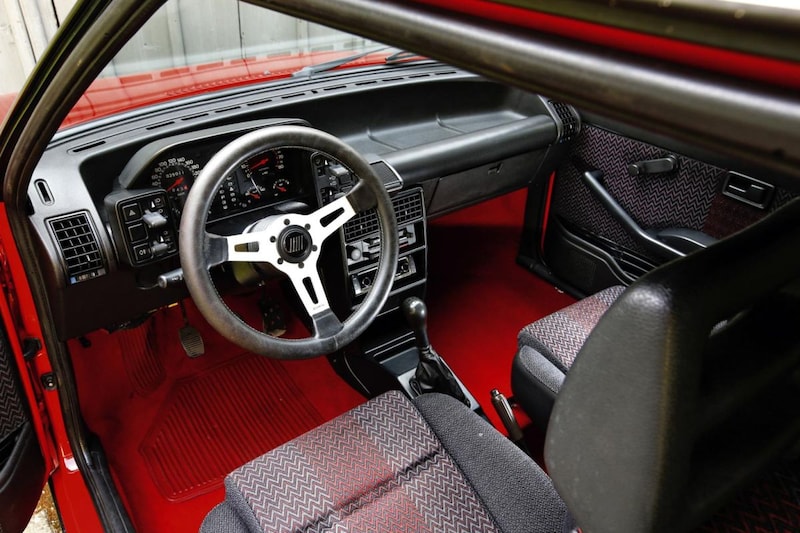Super fast eighties bomb

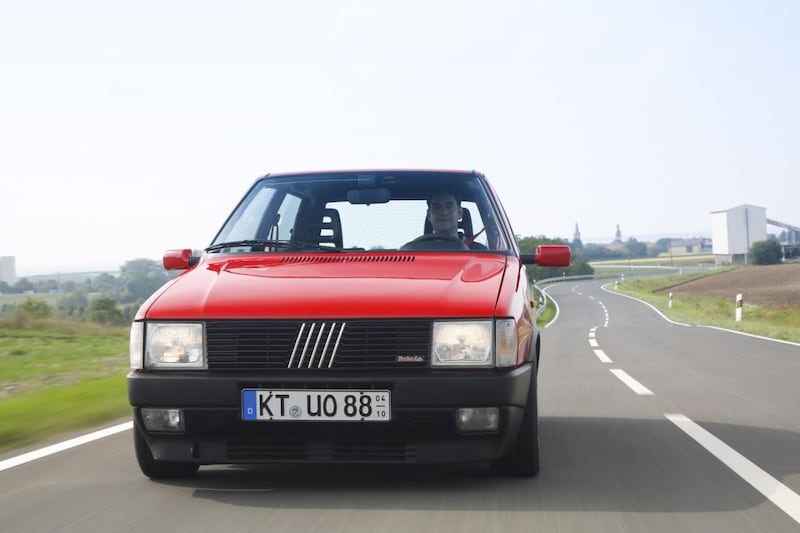
‘Turbo’ is the magic word of the 80s and if you have a sporty top model with a turbo engine, you really count as a brand. Fiat comes with the Uno Turbo, a nice sporty hot hatch. This bomb even shows the Porsche 944 its angular taillights!
If you have big news to report, you prefer to present it on a big stage. Fiat put this wisdom into practice with the introduction of the Uno Turbo in 1985. The setting is the circuit of Rio de Janeiro, where the Formula 1 season was supposed to kick off. Circus director Bernie Ecclestone can, according to insiders, receive a sloppy 200,000 guilders for this. Included in the price: a race with the stars. Nigel Mansell and his colleagues think the Uno Turbo’s chassis is less successful, but they all love the engine. Martin Brundle, who is currently driving for Tyrrell’s team, even starts to think out loud: “Nice cart, maybe I should buy one myself.”
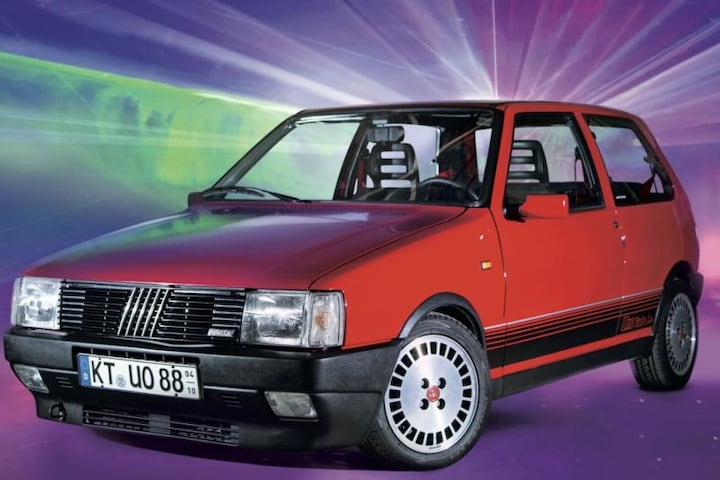
The Fiat Uno Turbo was not exaggerated for sale with its potential.
And the Uno Turbo is indeed a joy to drive, especially thanks to its impressive performance. Looking at the specifications of the Italian, we can’t help but smile: from 0 to 100 km/h in 8.3 seconds! This makes this small car 0.1 seconds faster than a Porsche 944, a truly impressive achievement. The Uno also achieves a top speed of 200 km/h (on paper), with which he even beats the Peugeot 205 GTI 1.6. Agree, even with a BMW 325i you can drive over the autobahn at more than 200 km/h, but with the Uno that is a lot cheaper and more exciting. Today, even the lightest Fiat 500e delivers 95 hp, but in the eighties you are completely the man if you have a compact car with 100 hp.
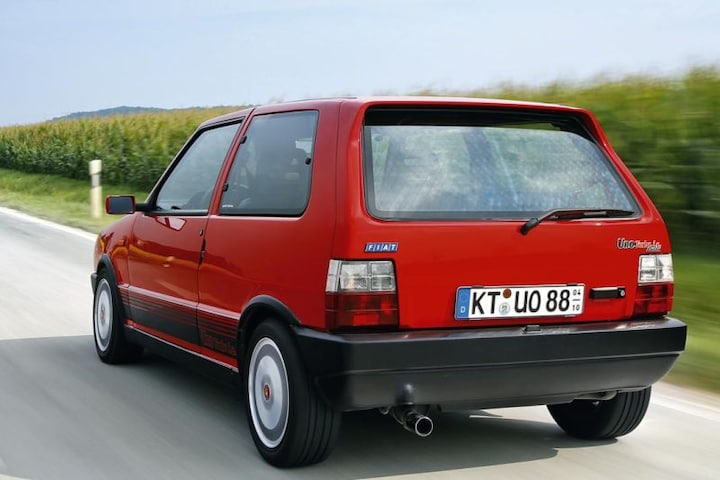
The Fiat Uno Turbo ie was not the first blown hatchback in the compact class.
The Renault 5 Alpine Turbo and Mitsubishi Colt Turbo establish the trend, in 1983 the Peugeot 205 GTI and the Honda Civic CRX follow, in 1984 the Ford Fiesta XR2 and Citroën Visa GTi and in 1985 the Volkswagen Polo G40 (first series in an edition of 500 copies for Germany and France) and thus the Uno Turbo. And again a little later, the sensational Daihatsu Charade GTti with its blown 1.0-liter driepitter and the Opel Corsa 1.6 GSi. If you compare all these boy racers, the conclusion is that Fiat has done its best to turn its compact hot hatch into something really sporty. The cylinder head, camshaft, pistons and valves of the Uno Turbo engine are completely newly developed, even the plastic tailgate with integrated spoiler was manufactured specifically for this model.
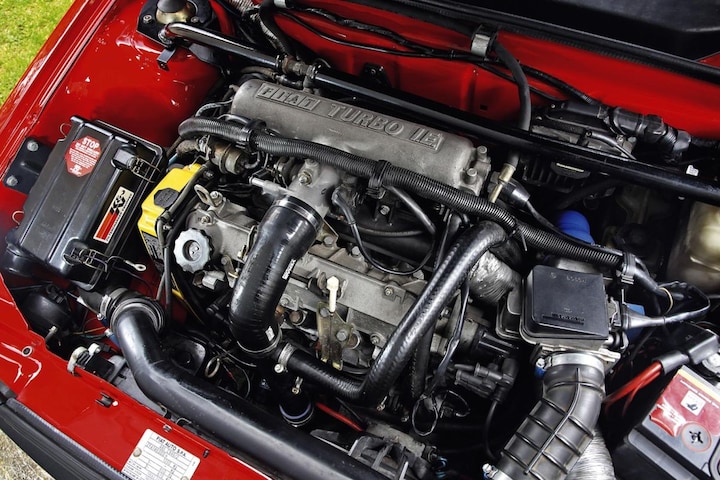
105 hp from a 1.3 turbo.
All the effort has not been in vain, because the top Uno hits like a bomb with motoring journalists. Especially its engine, but also its space and comfort are praised by the trade press. However, he never becomes a friend to everyone, unlike, for example, the Peugeot 205 GTI. How come? Because life isn’t always fair. And because it’s a Fiat. Many people are simply convinced that a Fiat rattles and rusts. Thus, fate had only two options in store for poor Uno: either he was misunderstood or he was kicked off. The 80s are now far behind us, but the image of the cars of the time does not seem to have changed. And apparently people’s views don’t either. Anyone who was not enthusiastic about this Fiat then, will not be now. Anyone who buys a Uno Turbo in 2022 often already had one in the past. To put it bluntly, today’s drivers are the same people as they were then, only they are probably taking it a little easier now than more than thirty-five years ago. Today, therefore, this car is no longer as jaded as it was in the 1980s, when Fiat invariably included the following sentence in test drive invitations: “We ask for your understanding that we can only entrust you with the Uno Turbo if you have experience with a car in this category.”
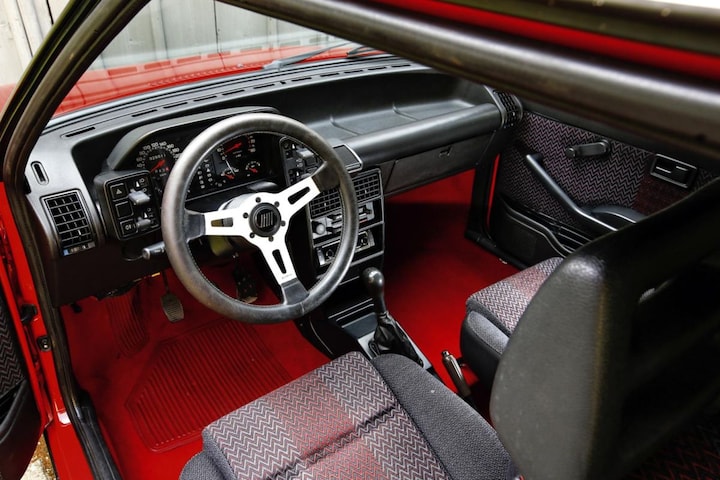
A red floor covering in the fast Uno, you saw that more often in the eighties. Also in the Renault 5 GT Turbo, for example.
Anyone who was allowed to take a seat at the wheel fell in love with the engine after a few kilometers, which was largely due to the turbo from the Japanese supplier IHI. At the time, there were few alternatives for turbo enthusiasts: when multi-valve technology emerged, the end of the turbo era seemed already near. When the Colt Turbo retired in 1988 and the Renault 5 GT Turbo threw in the towel with the turbo logo, the Uno Turbo, Charade GTti and Polo G40 were the last of the Mohicans in a world full of naturally aspirated engines. The Fiat kept its turbo technology until it went out of production in 1995 – which is a good thing in retrospect. The turbo gives the car the tracks from about 2,000 rpm.

Nice sound from a sporty exhaust.
At about 2,500 rpm you feel that you are gently pressed into your seat. Moreover, the engine hangs wonderfully on the gas, it makes enthusiastic revs and eagerly pulls through to 6,000 rpm. It also sounds wonderfully licentious and metallic. Only an Italian can produce such a sound. The only thing you have to get used to is the steering, which has to do without power steering. A ride through a parking garage is therefore quickly equivalent to a visit to the gym. On the other hand, you have unfiltered contact with the road.

After the facelift, the Fiat Uno Turbo was allowed to stay, but it didn’t get any more outward appearance.
The interior can also be called sporty: red carpet, red belts and seven round meters that answer all your questions. When you open the door, you notice that the Uno Turbo is miles away from the Polo G40. Whoever closes it, however, also notices that this is not a Mercedes. You don’t hear a solid ‘pop’, but a tinny sound. The bare metal and the lack of a cover on the handbrake seems a bit cheap at first, but with a little good will you can also see it as a weight saving! Anyway, the Uno Turbo is a nice and pure car and in that respect it is a kindred spirit of the Volkswagen Golf I GTI. With its weight of 845 kilos, the Fiat is only 35 kilos heavier than the original GTI. This car is mainly intended to give its driver a lot of driving pleasure, not to last forever. Sooner or later the rust devil strikes. Or the tuning scene. Nowadays this fiery Italian is a rarity, good and original examples are now just as rare as telephone booths. For many enthusiasts, therefore, only the memory remains. Should you nevertheless find one, we have only one advice: strike immediately!
.
– Thanks for information from Autoweek.nl
